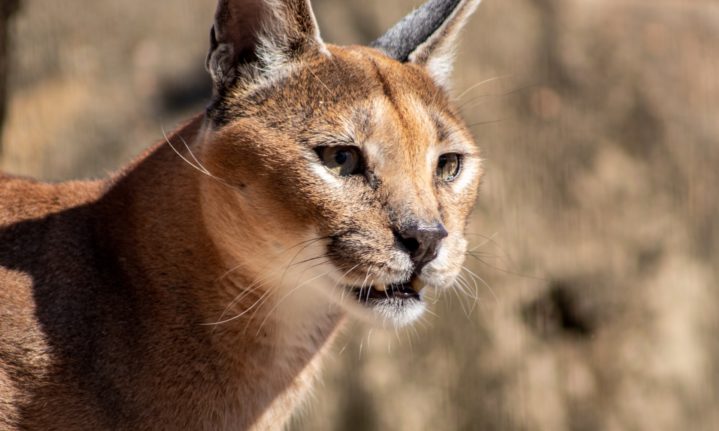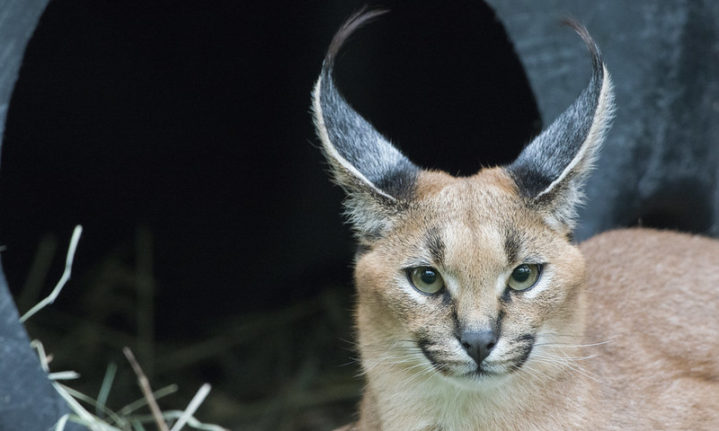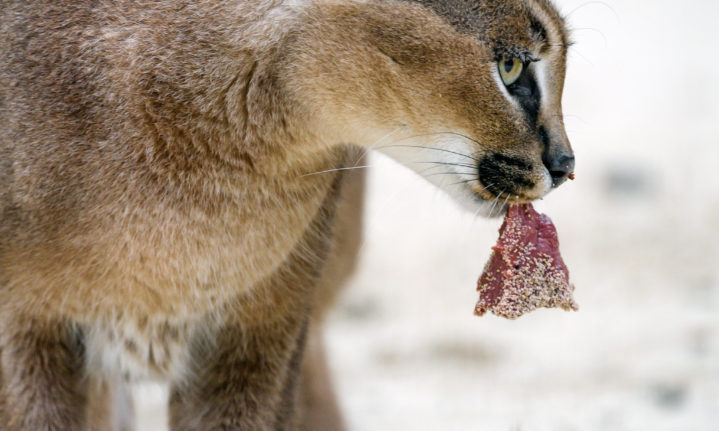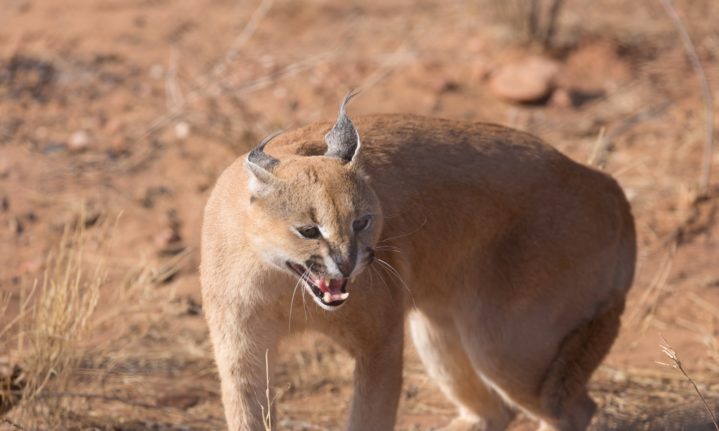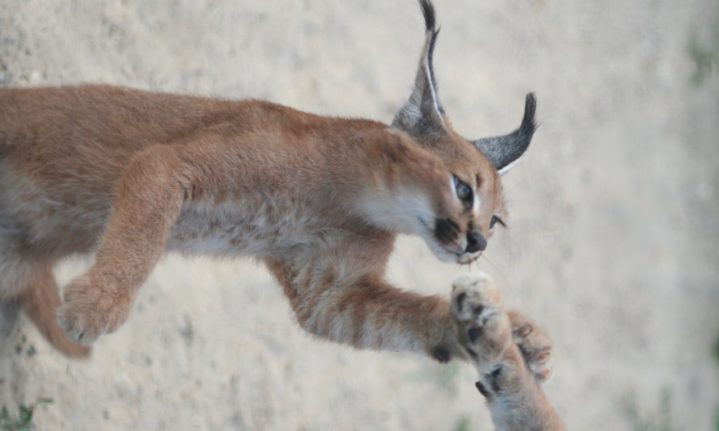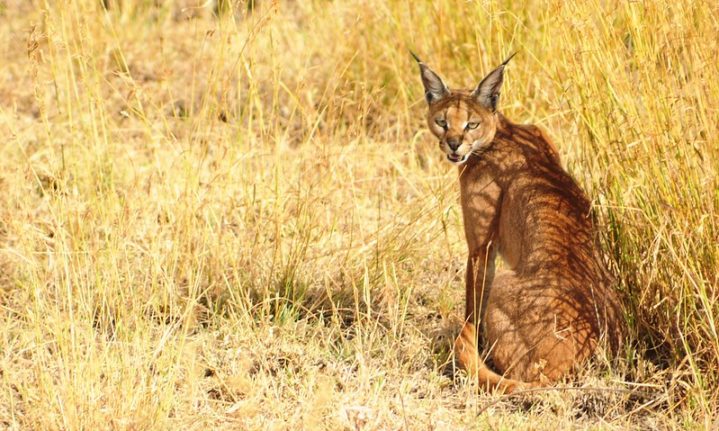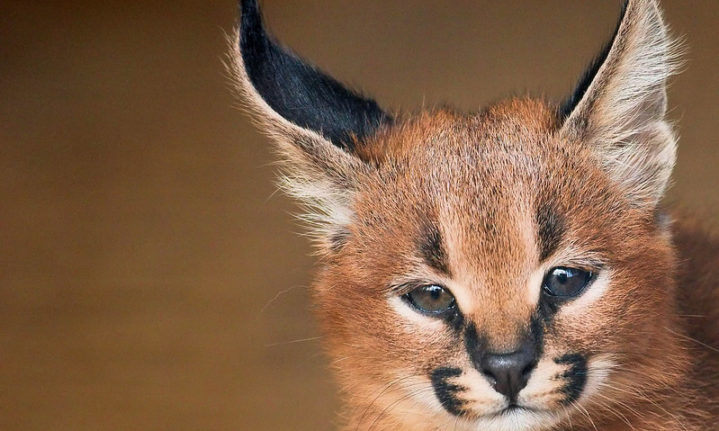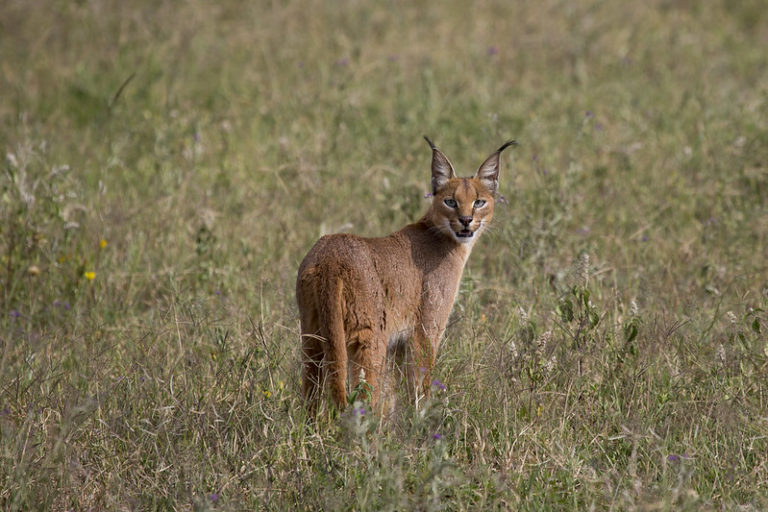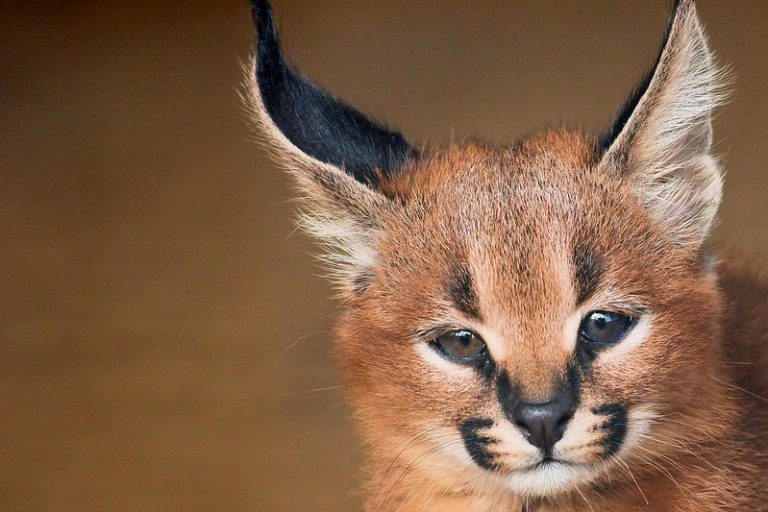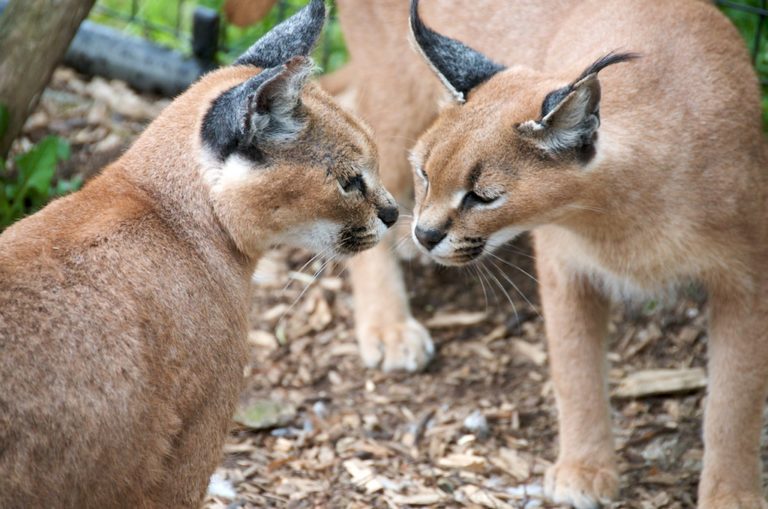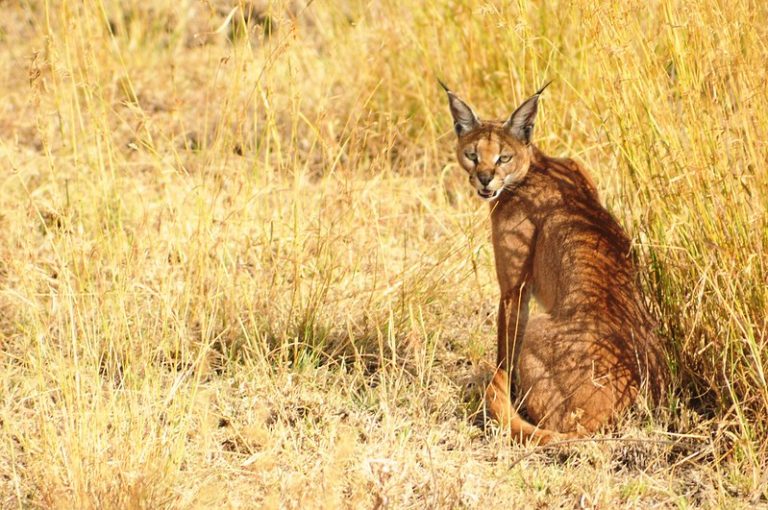If you’ve ever come across a caracal, you’ll agree that these cats are truly impressive. But how much do you know about these red-hued felines?
The caracal’s name is derived from a Turkish word: ‘karakulak’ which means ‘black ear.’ This refers to their very distinct characteristic: black tufted ears. Because of their ears, this small wild cat is sometimes mistaken to be a part of the lynx family of wild cats, hence its nickname ‘desert lynx.’
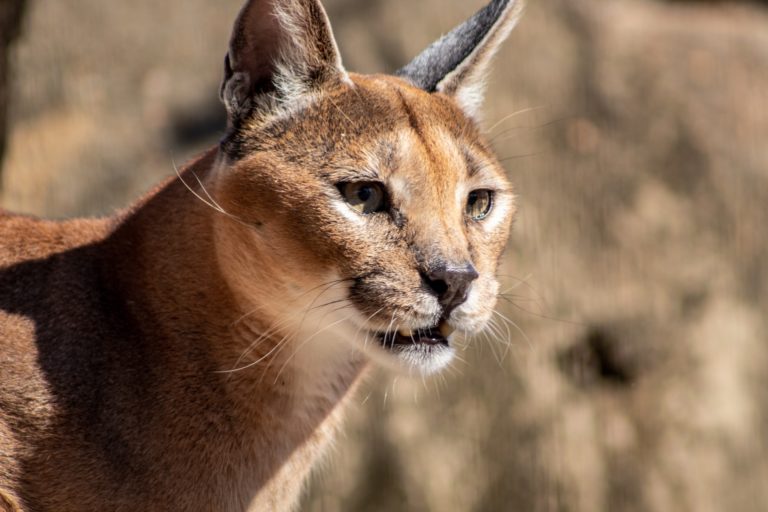
Credit: Joshua Cotten/Unsplash
However, caracals are in no way related to the lynx. Here is more about this unique small wild cat.
Appearance
Caracals have tawny-brown to brick-red coloured dense fur. The backs of their ears are black and topped with black tufts which can be approximately 4 cm long. They can be between 88 and 99 cm long. Male cats typically weigh a staggering 18kg, and females typically weigh approximately 15kg.
These small wild cats are renowned for their agility and razor-sharp reflexes. They can jump up to three metres into the air, and take down 10 or more birds at a time, according to Tenikwa.
Diet
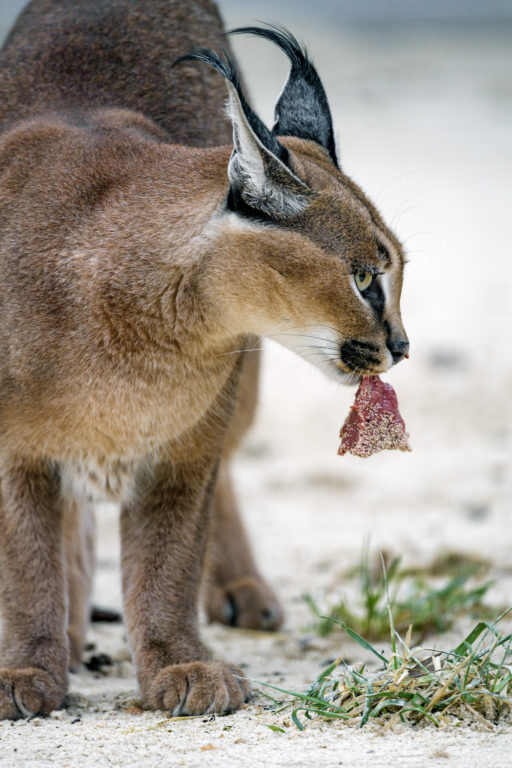
A tasty meat snack…Credit: Tambako The Jaguar/Flickr Commons
Caracals are strictly carnivorous, and feast on a variety of mammals, with the most common being rodents, hares, hyraxes and small antelopes. They do not back down from a challenge and will kill prey larger than themselves, likely enabled by their long canine incisors.
Habitat
Caracals prefer dry savannahs and woodlands, scrubby, arid habitats. On occasion, they may inhabit evergreen and montane forests, but they will not be found in tropical rain forests due to the moisture.
Breeding
A female caracal’s gestational period is approximately 78 to 81 days, and an average litter contains two kittens. Whilst caracal kittens are weaned off after 10 weeks, they remain with their mothers for up to a year. They reach sexual maturity after that.
Behaviour
Caracals are primarily nocturnal creatures, meaning that they are most active at night, though they are sometimes spotted in daylight in protected areas.
Caracals are primarily solitary animals.
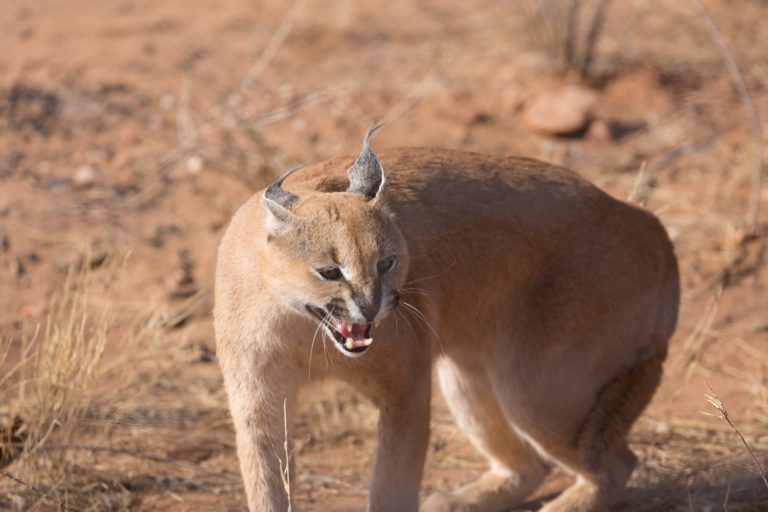
Credit: Bernd Dittrich/Unsplash
The only social interaction caracals engage in is during mating season, or a mother with their kitten.
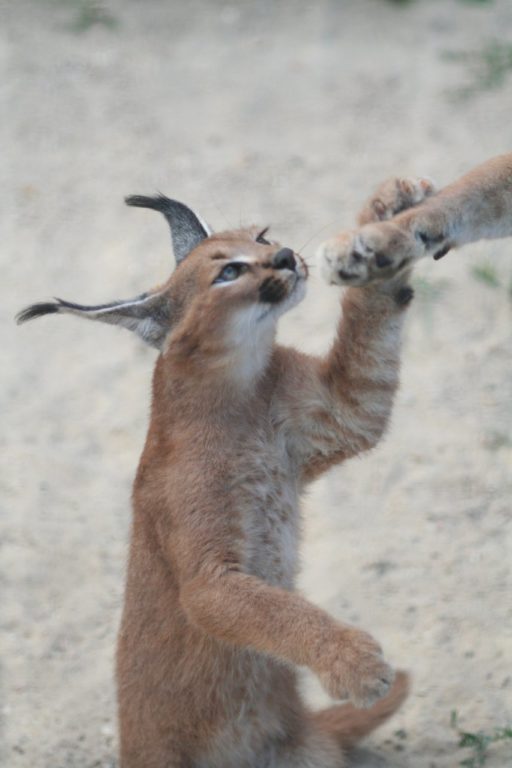
Caracal kitten interacting with mother. Credit: thy/Flickr Commons
Distribution
Caracals are distributed throughout Central Africa, South Africa, West Africa, Southwest Asia, and the Middle East.
Conservation Status
Under the International Union for Conservation of Nature and Natural Resources Red List of Threatened Species, caracals are currently listed under Least Concern, meaning that they are not near threatened, threatened, endangered, or cause for conservation.
ALSO READ
Everything you need to know about South Africa’s most common hare









